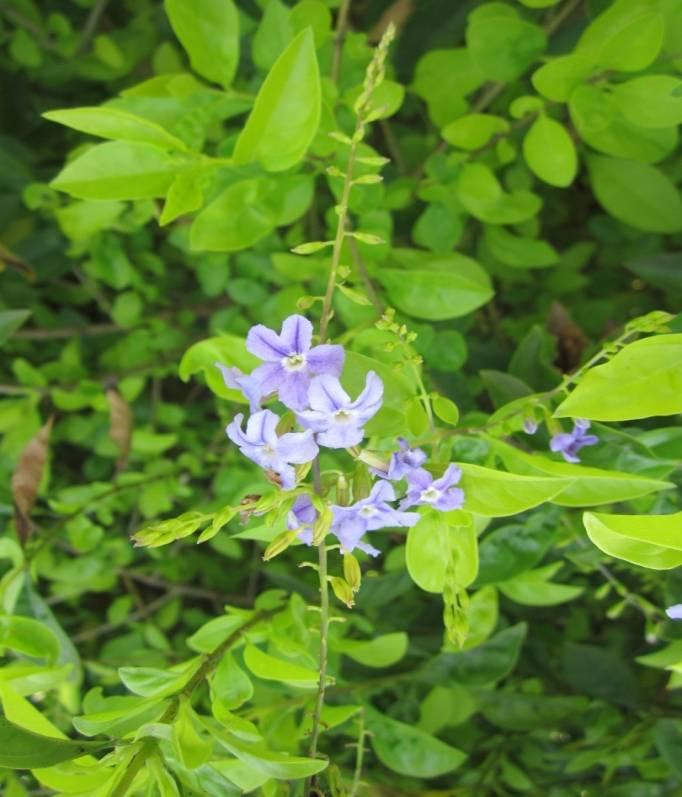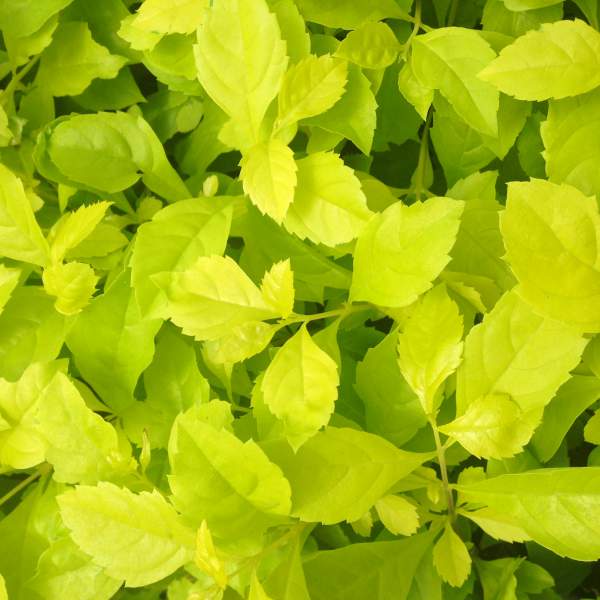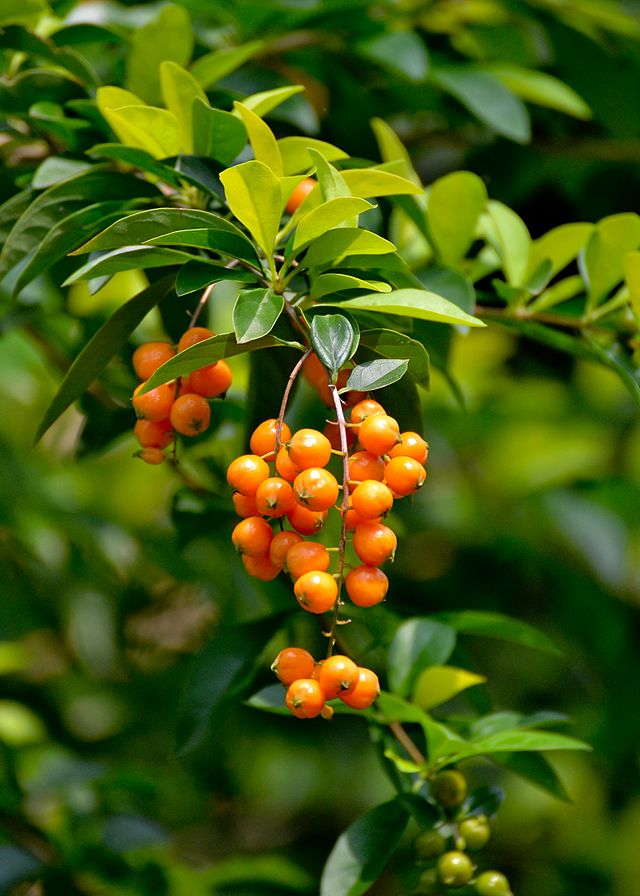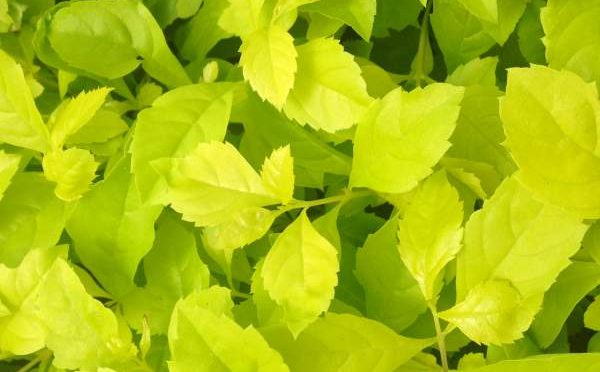The species is native to southern USA (i.e. Texas and southern Florida), Mexico, Central America (i.e. Belize, Costa Rica, El Salvador, Guatemala, Honduras, Nicaragua and Panama), the Caribbean and South America (i.e. Surinam, Venezuela, Brazil, Bolivia, Colombia, Ecuador, Peru, Argentina and Paraguay).
The branches can are often drooping in nature, especially when carrying large numbers of mature fruit. There are usually at least some pairs of spines along the stems, one located at the base of each of the leaf stalks (i.e. they are axillary spines). Younger stems are green in colour and sparsely covered in close-lying (i.e. appressed) hairs.
The leaves are simple and paired (i.e. oppositely arranged) or occasionally borne in whorls of three. They have short leaf stalks (i.e. petioles) up to 1 cm long and are oval (i.e. elliptic) to egg-shaped in outline (i.e. ovate). The leaf blades (15-90 mm long and 12-60 mm wide) usually have entire margins, but sometimes they are slightly toothed (i.e. serrated) towards the pointed or rounded tips (i.e. acute or obtuse apices). These leaves are sometimes sparsely covered in close-lying (i.e. appressed) hairs when they are young, but they quickly becomes hairless (i.e. glabrous).
Duranta (Duranta erecta) is regarded as an environmental weed in Queensland and northern New South Wales. It was recently listed among the top 50 most invasive species in the New South Wales North Coast environmental weed survey and among the top 100 most invasive plants in south-eastern Queensland. It is also regarded as a “sleeper weed” in other parts of Australia and is listed as an undesirable plant in the Wet Tropics World Heritage Area in northern Queensland.
This species invades moist or wet sites in native bushland areas, and is particularly common along river banks and in riparian zones. An infestation was recently reported to be climbing 10 m up into the existing canopy of an at risk regional ecosystem near Townsville in northern Queensland.
Duranta (Duranta erecta) is also listed as an important invasive plant in China, where it causes obvious changes in natural ecosystems, and it is on the list of the most invasive horticultural plants in Hawaii.




Duranta Erecta , orange berries and purple flower
